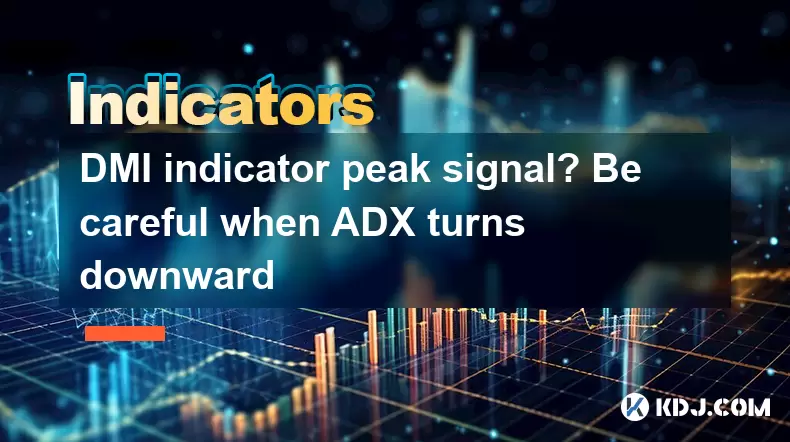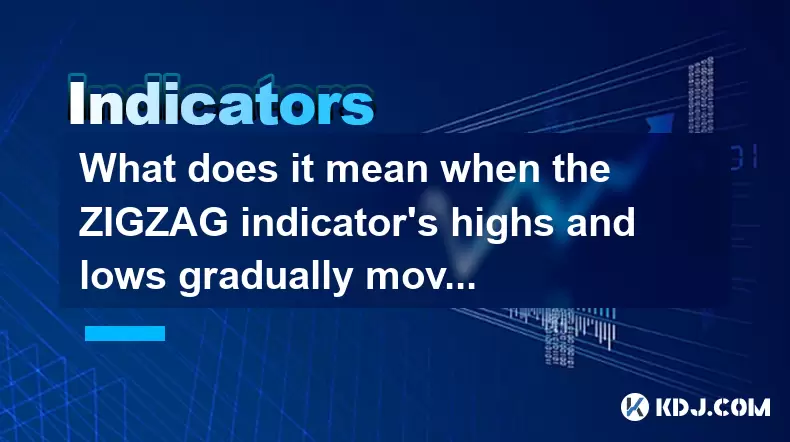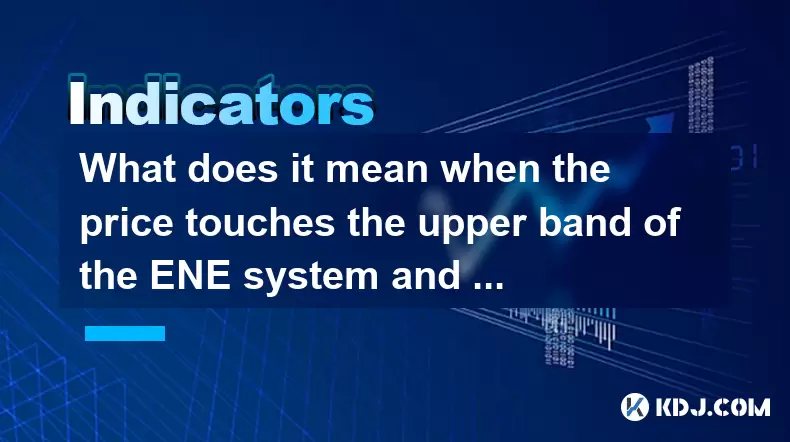-
 Bitcoin
Bitcoin $116600
0.11% -
 Ethereum
Ethereum $4235
4.72% -
 XRP
XRP $3.283
0.22% -
 Tether USDt
Tether USDt $1.000
0.00% -
 BNB
BNB $805.4
1.59% -
 Solana
Solana $181.8
2.27% -
 USDC
USDC $0.9998
-0.01% -
 Dogecoin
Dogecoin $0.2450
7.90% -
 TRON
TRON $0.3363
-0.80% -
 Cardano
Cardano $0.8161
2.85% -
 Hyperliquid
Hyperliquid $43.68
6.68% -
 Chainlink
Chainlink $21.20
8.50% -
 Stellar
Stellar $0.4526
0.64% -
 Sui
Sui $3.949
3.12% -
 Bitcoin Cash
Bitcoin Cash $571.3
-2.83% -
 Hedera
Hedera $0.2656
1.45% -
 Avalanche
Avalanche $24.41
3.14% -
 Ethena USDe
Ethena USDe $1.001
0.03% -
 Litecoin
Litecoin $122.0
-2.03% -
 Toncoin
Toncoin $3.425
1.51% -
 UNUS SED LEO
UNUS SED LEO $9.004
0.19% -
 Shiba Inu
Shiba Inu $0.00001381
4.36% -
 Uniswap
Uniswap $10.93
0.05% -
 Polkadot
Polkadot $4.117
3.93% -
 Dai
Dai $1.000
0.02% -
 Pepe
Pepe $0.00001235
3.53% -
 Bitget Token
Bitget Token $4.507
0.36% -
 Cronos
Cronos $0.1570
2.05% -
 Monero
Monero $274.9
0.14% -
 Ethena
Ethena $0.7511
15.68%
DMI indicator peak signal? Be careful when ADX turns downward
Use DMI to spot peak signals in crypto trading, but be cautious when ADX turns downward, as it may signal a weakening trend.
Jun 03, 2025 at 03:08 pm

The Directional Movement Index (DMI) and the Average Directional Index (ADX) are crucial tools for traders in the cryptocurrency market, helping them identify the strength of a trend and potential peak signals. When using the DMI indicator, it's important to be vigilant, especially when the ADX turns downward. This article will explore how to effectively use the DMI indicator to spot peak signals and why you should be cautious when the ADX turns downward.
Understanding the DMI and ADX
The DMI consists of two lines: the Positive Directional Indicator (+DI) and the Negative Directional Indicator (-DI). These lines help traders determine the direction of the trend. The ADX, on the other hand, measures the strength of the trend, regardless of its direction. When the ADX is above 25, it indicates a strong trend, while a value below 20 suggests a weak trend.
Identifying Peak Signals with the DMI
Peak signals in the DMI occur when there is a crossover between the +DI and -DI lines. A bullish peak signal is generated when the +DI crosses above the -DI, suggesting that the upward momentum is gaining strength. Conversely, a bearish peak signal is indicated when the -DI crosses above the +DI, signaling that downward momentum is increasing.
To identify these peak signals effectively, traders should:
- Monitor the +DI and -DI lines closely for crossovers.
- Confirm the peak signal by observing the ADX value. If the ADX is rising alongside the crossover, it strengthens the signal.
The Importance of ADX in Peak Signal Analysis
The ADX plays a critical role in validating peak signals identified by the DMI. A rising ADX alongside a +DI/-DI crossover confirms the strength of the trend and the validity of the peak signal. However, if the ADX is flat or declining, it suggests that the trend may be losing momentum, which could lead to a false peak signal.
Being Cautious When ADX Turns Downward
When the ADX turns downward, it's a sign that the trend's strength is diminishing. This is a critical moment for traders to be cautious, as it could indicate that the peak signal previously identified might not hold. A declining ADX after a +DI/-DI crossover suggests that the market might be entering a consolidation phase or reversing direction.
Traders should take the following steps when the ADX turns downward:
- Reassess the current market conditions and the strength of the trend.
- Consider closing positions if the ADX continues to decline, as it might signal a weakening trend.
- Look for other technical indicators to confirm the trend's direction and strength.
Practical Application of DMI and ADX in Cryptocurrency Trading
To apply the DMI and ADX in cryptocurrency trading, follow these detailed steps:
- Open your trading platform and select the cryptocurrency pair you want to analyze.
- Add the DMI and ADX indicators to your chart. Most platforms allow you to do this by selecting the indicators from a menu and applying them to the chart.
- Observe the +DI and -DI lines for any crossovers. A bullish crossover occurs when the +DI line moves above the -DI line, while a bearish crossover happens when the -DI line moves above the +DI line.
- Check the ADX line to see if it's rising or falling. A rising ADX confirms the strength of the trend, while a falling ADX suggests the trend is weakening.
- Monitor the ADX closely after identifying a peak signal. If the ADX turns downward, it's a warning sign that the trend might be losing momentum.
- Adjust your trading strategy based on the ADX's direction. If the ADX is declining, consider taking profits or tightening stop-losses to protect your positions.
Real-World Example of DMI and ADX in Action
Let's consider a hypothetical example of using the DMI and ADX to trade Bitcoin (BTC). Suppose you're analyzing the BTC/USD pair and notice that the +DI line crosses above the -DI line, signaling a bullish peak. At the same time, the ADX is rising, confirming the strength of the bullish trend.
You decide to enter a long position based on this signal. However, a few days later, you observe that the ADX starts to turn downward. This is a warning sign that the bullish trend might be weakening. You decide to reassess your position and consider taking profits or adjusting your stop-loss to mitigate potential losses.
Frequently Asked Questions
Q: Can the DMI and ADX be used for short-term trading in the cryptocurrency market?
A: Yes, the DMI and ADX can be effective for short-term trading. Traders often use these indicators to identify short-term trends and potential entry and exit points. However, it's important to combine these indicators with other technical analysis tools to increase the accuracy of short-term trading signals.
Q: How often should I check the DMI and ADX indicators when trading cryptocurrencies?
A: The frequency of checking the DMI and ADX depends on your trading strategy. For day traders, it's advisable to monitor these indicators throughout the trading day, as short-term trends can change rapidly. For swing traders, checking the indicators at the beginning and end of the trading day may be sufficient.
Q: Are there any limitations to using the DMI and ADX in cryptocurrency trading?
A: Yes, there are limitations to using the DMI and ADX. These indicators can sometimes generate false signals, especially in choppy or sideways markets. Additionally, they may lag behind real-time price movements, so it's important to use them in conjunction with other indicators and analysis techniques to confirm trading signals.
Q: Can the DMI and ADX be used to predict cryptocurrency market reversals?
A: While the DMI and ADX can help identify potential trend reversals, they are not designed to predict market reversals with certainty. A declining ADX after a peak signal can suggest that a trend might be weakening, but traders should use other indicators and market analysis to confirm potential reversals before making trading decisions.
Disclaimer:info@kdj.com
The information provided is not trading advice. kdj.com does not assume any responsibility for any investments made based on the information provided in this article. Cryptocurrencies are highly volatile and it is highly recommended that you invest with caution after thorough research!
If you believe that the content used on this website infringes your copyright, please contact us immediately (info@kdj.com) and we will delete it promptly.
- Solana Meme Coin Presales: Hype or the Next Big Thing?
- 2025-08-10 02:50:12
- Pi Network, Altcoin Season, and Breakout Tokens: What's Hot in 2025?
- 2025-08-10 02:50:12
- Decoding Crypto Presales: Is Cold Wallet the New Neo Pepe?
- 2025-08-10 02:30:12
- Cryptos, 2025, Market Caps: Riding the Next Wave
- 2025-08-10 02:30:12
- Trump, Crypto Vehicle, and WLFI Tokens: A New York Minute on the Latest Buzz
- 2025-08-10 00:30:12
- Wheat Penny Fortune: Unearthing Valuable Coins in Your Pocket Change
- 2025-08-10 00:35:19
Related knowledge

What does it mean when the price is trading above the SAR indicator but the red dots are densely packed?
Aug 09,2025 at 11:49pm
Understanding the SAR Indicator and Its Visual SignalsThe SAR (Parabolic Stop and Reverse) indicator is a technical analysis tool used primarily to de...

What does it mean when the MACD histogram continues to shorten but the price reaches a new high?
Aug 09,2025 at 09:29pm
Understanding the MACD Histogram and Its ComponentsThe MACD (Moving Average Convergence Divergence) indicator is a widely used technical analysis tool...

What does it mean when the Triple Moving Average (TRIX) turns downward but the price doesn't fall?
Aug 09,2025 at 12:42pm
Understanding the Triple Moving Average (TRIX) IndicatorThe Triple Moving Average, commonly known as TRIX, is a momentum oscillator designed to filter...

What does it mean when the 10-day and 30-day moving averages repeatedly intertwine?
Aug 10,2025 at 02:42am
Understanding Moving Averages in Cryptocurrency TradingMoving averages are among the most widely used technical indicators in the cryptocurrency tradi...

What does it mean when the ZIGZAG indicator's highs and lows gradually move downwards?
Aug 10,2025 at 02:14am
Understanding the ZIGZAG Indicator in Cryptocurrency TradingThe ZIGZAG indicator is a popular technical analysis tool used by cryptocurrency traders t...

What does it mean when the price touches the upper band of the ENE system and then falls back?
Aug 10,2025 at 12:42am
Understanding the ENE Indicator StructureThe ENE (Envelope) indicator is a technical analysis tool used in cryptocurrency trading to identify potentia...

What does it mean when the price is trading above the SAR indicator but the red dots are densely packed?
Aug 09,2025 at 11:49pm
Understanding the SAR Indicator and Its Visual SignalsThe SAR (Parabolic Stop and Reverse) indicator is a technical analysis tool used primarily to de...

What does it mean when the MACD histogram continues to shorten but the price reaches a new high?
Aug 09,2025 at 09:29pm
Understanding the MACD Histogram and Its ComponentsThe MACD (Moving Average Convergence Divergence) indicator is a widely used technical analysis tool...

What does it mean when the Triple Moving Average (TRIX) turns downward but the price doesn't fall?
Aug 09,2025 at 12:42pm
Understanding the Triple Moving Average (TRIX) IndicatorThe Triple Moving Average, commonly known as TRIX, is a momentum oscillator designed to filter...

What does it mean when the 10-day and 30-day moving averages repeatedly intertwine?
Aug 10,2025 at 02:42am
Understanding Moving Averages in Cryptocurrency TradingMoving averages are among the most widely used technical indicators in the cryptocurrency tradi...

What does it mean when the ZIGZAG indicator's highs and lows gradually move downwards?
Aug 10,2025 at 02:14am
Understanding the ZIGZAG Indicator in Cryptocurrency TradingThe ZIGZAG indicator is a popular technical analysis tool used by cryptocurrency traders t...

What does it mean when the price touches the upper band of the ENE system and then falls back?
Aug 10,2025 at 12:42am
Understanding the ENE Indicator StructureThe ENE (Envelope) indicator is a technical analysis tool used in cryptocurrency trading to identify potentia...
See all articles

























































































